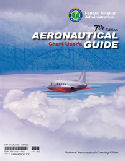TAKEOFF PHASE
The time shortly after applying full power is when everyone starts to ask, “Did I do
everything I was supposed to do? Did I leave my briefcase on the wing?” You can reduce the anxiety and
increase your confidence by being organized and prepared, and most importantly, by having an SOP (Standard
Operating Procedure) or routine.
Even though it represents only a few minutes of a flight, twenty-four percent of all accidents occur during
takeoff. A professional cockpit reduces the risk at takeoff by taking several simple steps:
- Preparation: Proper preflight planning review: route, weather, airport and obstructions, performance.
Communication of this information and discussion between the crew members.
- Implementation: Use of a Standard Operation Procedure or SOP. Using the same techniques and routine
regardless of conditions. If a pilot always uses the same techniques, then when weather is low or other adverse
conditions occur, then he/she is not forced to implement something they might not have done in a long time.
SOPs help keep everyone's situation awareness high.
- Resource Management: Delegation of tasks. When you're flying the airplane during critical phases of
flight, it's important to delegate tasks and reduce workload. For example: "Joe, could you swing my heading bug
to 190 degrees?" Prioritization of tasks. During critical phases of flight, it's important to not become
distracted by insignificant items. An example would be a flying pilot looking down, trying to set up a flight
director during takeoff roll. Either forget it, abort, or at a minimum, delegate the task!
- SCRUB: The most important factor in all phases of flight is the ability of a pilot to scrub a flight
that is no longer meeting targeted requirements—and to do so without reluctance. It's difficult to stop a
process in motion, but it's a skill that gets easier with practice. Usually you find that the inconvenience of
scrubbing a flight is insignificant, especially when compared to the alternative.
More Details...
Preflight Briefing – It's standard operating procedure for flight crews to take a moment before
every takeoff for a preflight briefing. Even without a copilot, you can discuss the departure in your head. This is
an important time to picture the takeoff and to get focused. A typical preflight briefing would include the
following.
Numbers for takeoff – Takeoff and rotation speeds, Power settings, Takeoff distances, runway
available. Frequencies needed after takeoff for navigation and communication.
Weather – Any weather in the area that might be of concern, including rain, thunderstorms,
visibility, icing, winds, how soon till you're in the clouds.
Route – What is your first heading and altitude after takeoff? What is your first fix?
Emergency Plan – What items are you going to abort for? Maybe engine sputter or an engine light; what else? What
items are not going to worry about? Maybe falling charts, or a radio that dies? What runway or airport are you
going to return to?
Obstacles – Where are the obstacles in the area? Where is a good place to turn in the event of an
engine failure?
Sample Briefing
"O.K., Mike, this is my leg. We're departing VFR off Runway 22. We're familiar with this airport and the area.
Takeoff weight is 15,200 lbs. We have 6500 feet available and our calculations show we need 4300 for takeoff and
3950 for landing in case of an emergency return. Takeoff V speeds are 98, 104, 112.
"I'm going to abort for any warning lights, major malfunctions, control problems up to V1. If for any reason
you call abort, I will abort. If anything happens after V1, we will continue the takeoff and then return to this
runway. The return ref speed is 102. If we should pop a bucket after takeoff, I want you to reach up and hit both
emergency thrust reverser stow buttons one time. Then monitor the stow and recover power if it's available. Engine
fires we will take care of memory items at 400 feet; everything else will wait till traffic pattern, then go to
checklist. If any other controls need to be manipulated you identify and I will verify and guard the good side if
necessary." "Departure frequency is set in the number two radio. After takeoff we are going to climb on runway
heading up to 3000 feet. We have been over the weather and the route. Any questions?"
Callouts
Two pilot crews provide callouts for each other in several different phases of flight. The idea is to provide
information to the flying pilot so he/she doesn't have to look inside the cockpit and instead can focus all his/her
attention outside the cockpit. Callouts have another benefit, and that is that they help keep everyone aware of
where you are in a given phase of flight. In a single-pilot environment, even if you only use these callouts in
your head it will help you focus and stay oriented to where you are in the takeoff roll. Some callouts that might
be appropriate in a smaller plane are:
-Airspeed alive
-Engine gages normal and green
-Rotations speed
Takeoff is initiated and wind correction is applied to stay over the runway. For retractable gear aircraft, the
gear is retracted with positive rate and clear of the runway. Nothing else should be attempted at this time; just
fly the airplane. Do not reply to ATC, do not attempt checklist, do not begin a turn. Focus on aircraft control.
When a safe altitude is reached (at least 400 feet), only basic items can be done, such as beginning a turn and
replying to ATC. Wait until traffic pattern altitude is reached before starting checklist.
Sample Takeoff with Callouts
PF (pilot flying) - Initially sets power.
PNF (pilot not flying) - "Power is coming up together and normal, engine gauges in the green."
PF - "Set Power," asking PNF to make any final adjustments.
PNF - "Power is set."
PNF - "Airspeed alive both sides."
PNF - "80 knots, cross check."
PF - "80 knots, check."
PNF - "V1, rotate, V2".
At V1 the PF lifts his/her hands from the throttles, placing both hands on the wheel/yoke. This allows for better
aircraft control and also signifies the end of the abort phase of takeoff. Any problems now will be taken into the
air.
PF - "Positive rate."
PNF - "Clear of the runway."
PF - "Gear up."
PNF - "400 feet."
STERILE COCKPIT
Most professional flight departments have a sterile cockpit rule below 10,000 feet. That means no unnecessary
talking, and no unnecessary tasks or disruptions. It also means informing passengers when it will be OK to ask
questions, etc. Since many small planes never get above 10,000 feet, it would be wise to maintain sterile cockpit
until you reach a cruise altitude. This helps you stay focused and avoid distractions.
STANDARD OPERATION PROCEDURES
Develop a standard procedure for departing. Don’t be in a big hurry to turn on course or finish a checklist. Always
stay vigilant for other aircraft and obstacles and fly the airplane. When time and altitude permit, finish your
“after takeoff” checklist.
Read Procockpits Standard Operating Proceduces Section.
|












